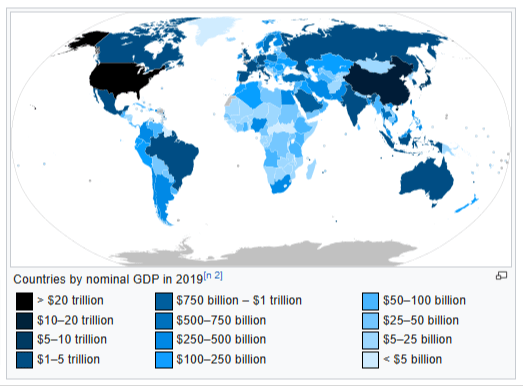What Does GDP Mean When It Comes to the Economy of a Country?
Gross Domestic Product (GDP) is a commonly used economic indicator that measures the total value of all final goods and services produced within a country’s borders during a specific period. It provides a snapshot of an economy’s economic activity and size.
GDP can be calculated using three Different Approaches:
- Production Approach: This approach calculates GDP by summing up the value added at each production stage across all industries. It measures the value of goods and services produced within the country’s borders.
- Expenditure Approach: This approach calculates GDP by summing up the total spending on goods and services within the economy. It considers four main components of expenditure: consumption, investment, government spending, and net exports (exports minus imports).
- Income Approach: This approach calculates GDP by summing up the incomes individuals and businesses earn in production. It includes wages, salaries, profits, rents, and other forms of income.
GDP provides a way to compare different countries economic performance and size. It is often used as a key indicator to monitor economic growth, track living standard changes, and analyze an economy’s overall health. However, it is important to note that GDP alone does not capture all aspects of economic well-being, such as income distribution, environmental sustainability, or quality of life.
Also Read: Poverty in 2023
Factors Affecting Gross Domestic Product (GDP)
Several factors can affect Gross Domestic Product (GDP). These factors can be categorized into two main groups: demand-side factors and supply-side factors. Here are some key factors that influence GDP:
Demand-Side Factors Affecting Gross domestic product (GDP):
- Consumer spending: Consumer spending is a major driver of economic activity and can significantly impact GDP. When consumers increase their spending on goods and services, it leads to higher demand and production, thus boosting GDP.
- Investment: Business investment in machinery, equipment, and infrastructure can stimulate economic growth. Increased investment leads to higher productivity, job creation, and expansion of industries, contributing to GDP growth.
- Government spending: Government expenditures on public goods and services, such as infrastructure projects, defense, healthcare, and education, can directly influence GDP. Government spending can stimulate economic activity and employment.
- Net exports: The difference between exports and imports (net exports) affects GDP. Higher exports than imports (trade surplus) contribute positively to GDP, while higher imports than exports (trade deficit) can have a negative impact on GDP.
Supply-Side Factors Gross Domestic Product (GDP):
- Labor force and productivity: The size and productivity of the labor force play a crucial role in economic output. Increases in the labor force through population growth or higher participation rates can contribute to GDP growth. Similarly, productivity improvements achieved through technological advancements or better skills can enhance economic output.
- Technological progress and innovation: Technological advancements can increase productivity, efficiency, and economic growth. Investments in research and development, new technologies, and the adoption of innovative processes can positively impact GDP.
- Natural resources: The availability and utilization of natural resources can influence economic output. Countries rich in natural resources, such as oil, minerals, or agricultural land, can experience higher GDP growth if those resources are effectively utilized.
- Government policies: Government policies, such as fiscal and monetary policies, taxation, regulations, and trade policies, can shape economic activity and impact GDP. Well-designed policies that promote investment, entrepreneurship, and market competitiveness can foster economic growth.

BOTTOM LINE
It’s important to note that these factors interact, and changes in one factor can have ripple effects on others, influencing GDP growth in complex ways.

